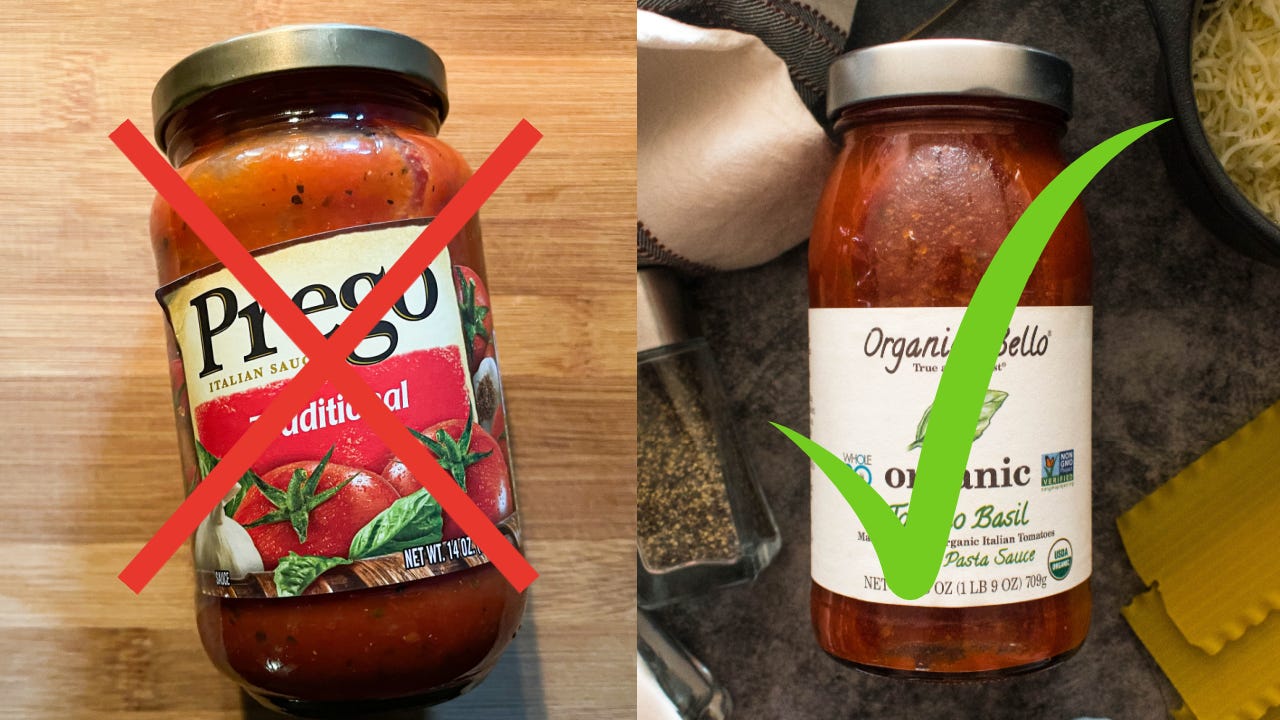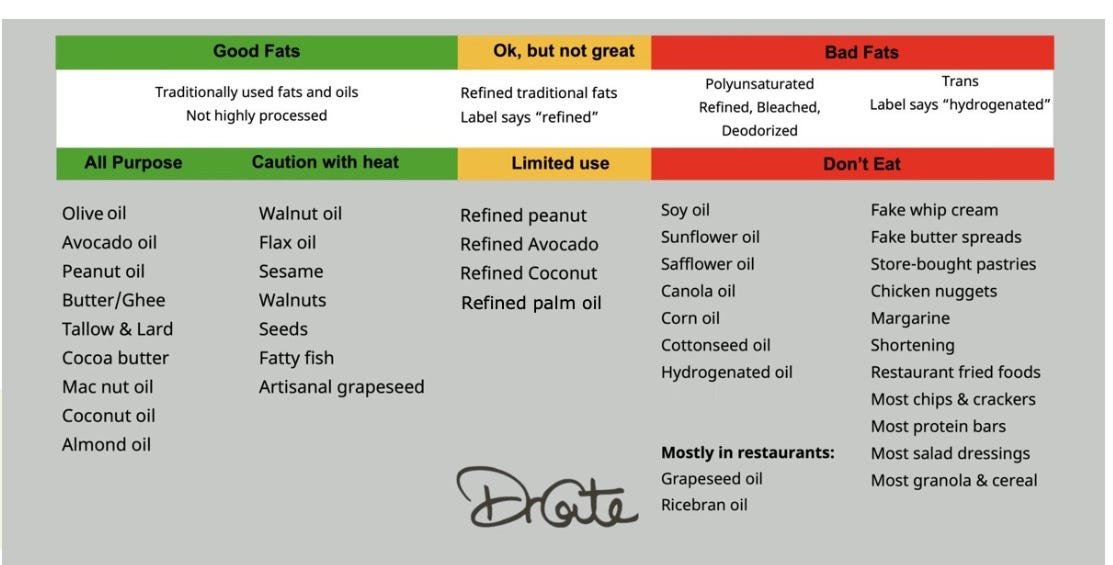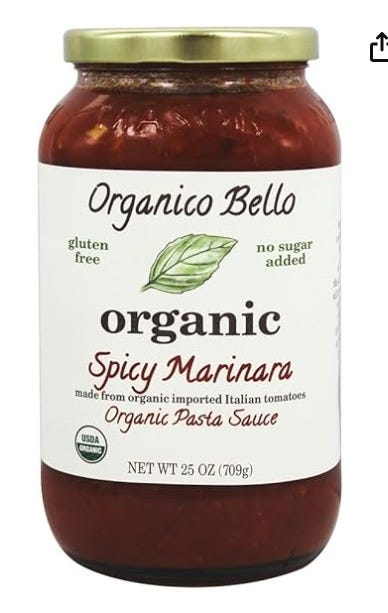4 ways to spot unhealthy products at the store
Avoid pesticides, harmful additives, and toxic preservatives for longevity
Every year, approximately 2,500 new chemical substances are introduced into products in the United States, infiltrating our food supply, water sources, and homes.
Our bodies have never encountered many of these substances before, and the long-term effects remain largely unknown.
While the United Nations and the European Union have taken steps to ban numerous harmful chemicals, the regulations in the United States lag behind, leaving us exposed to substances like PFAS, phthalates, heavy metals, pesticides, and microplastics.
For many, the journey toward a less toxic lifestyle can be daunting.
After years in the biohacking space—experimenting, investing in products, and sifting through countless blogs and forums—I've discovered companies that genuinely care about our health and the environment. They strive to create non-toxic products that are good for both you and the planet.
I want to give you the tools as well- the tools to understand what is healthy and what isn’t. For now I’ll teach you how to read ingredient labels, starting with pasta sauce as an example. Why pasta sauce? Well, why not? :)
How to read a nutrition label properly
One of the most crucial components to being healthy is reading packaging properly. There are plenty of fancy words and greenwashing tactics that companies use, but I can help you wade through that mess.
My 4-Step Nutrition Label Checklist:
Alright we in the grocery store. You’re going to cook some incredible pasta tonight, and you grab a jar of Prego sauce because it’s the classic choice, right? Well, first…
1. Check the container.
You want to check the container because most containers are made out of cheap plastics.
BPA/BPS/BPF are found in plastics and lead to toxicity.
Avoid all hot drinks in paper or plastic if you can. The paper cups are lined with wax, and that essentially melts into your drink. That’s not good for your hormones and your overall body.
Get glass if you can because glass is king.
Look, you can’t avoid plastic containers altogether, but weeding it out as much as you can is best.
2. Read the front of the label
It simply says "Prego Italian Sauce Marinara."
Unfortunately, Prego doesn’t have any labels like "non-GMO" or "organic" on the front. Without a non-GMO label, we know the veggies are genetically modified. Anything genetically modified is going to react within our bodies in a foreign way. It's like putting regular gas into a diesel truck—it's simply not correct.
Next, there’s no organic label, which means the tomatoes or whatever veggies are in here are heavily sprayed with pesticides, which are toxic to the human body.
3. Research the product
Prego is owned by Campbell's—a massive food conglomerate. And after learning about greenwashing in my recent article, I'm assuming the worst.
4. Read the ingredients.
This may look healthy, but there are many issues.
The first ingredient is tomato puree, and the second is diced tomatoes in tomato juice. There are no real tomatoes in here. It seems like they’re cutting corners by using pastes and juice in order to mimic real tomatoes. The third ingredient happens to be sugar, which is never good.
Then there’s salt, not sea salt, just table salt, which is stripped of all of its minerals and only provides sodium. Table salt is the reason blood pressure increases, not sea salt.
Next, we've got canola oil, a super inflammatory, highly processed oil that's terrible for you. It causes high amounts of free radical damage and oxidative stress in the body. There are plenty of other processed oils that are unhealthy that you should avoid.
If you would like to learn more on the dangers of seed oils, Dr. Cate is one of the leading scientists in the field on the toxicity of them. Learn more here.
Here is an image to show which fats to avoid in ANY foods or products.
As you continue down the list they use less than 1% of dried garlic and onion, which means it’s ultra processed. You're losing all the nutritional value from these herbs and just getting dried powder. Not to mention "spices." What even is "spices"? They don't tell you.
Finally, we get the usual preservative, citric acid. Although citric acid is naturally found in lemon and other fruits, the additive used in packaged foods is typically derived from mold made with GMO corn (not from fruit).
Prego is advertising that 40% of your daily vegetables come from this sauce.
But with these ingredients?
Other Dangerous Ingredients To Watch Out For
Okay, maybe marinara is not your thing, but Alfredo is. I love it as well—cheesy, herby deliciousness. So we're at the grocery store, and we just picked this one up off the shelf. Looks great! It's got an Italian name, it's been around since 1865, and says "fresh cream and aged Parmesan"! Whatever it says on the front, don't be fooled.
Once again, let's run through the list.
Check container.
Okay, glass again. Good start.
Front label.
Yes, we see "fresh cream," but not a single organic or non-GMO label. Assume the worst.
Product research
It's owned by Mizkan Group, one of the leading manufacturers of sauces and condiments in America. Big companies are most likely taking shortcuts to gain profit margins—we've heard the story before. I don't like to always think doom and gloom, but once again, assume the worst.
Ingredients:
Water, Cream, Butter (Sweet Cream, Salt), Parmesan Cheese (Pasteurized Part-Skim Milk, Cheese Cultures, Salt, Enzymes), Soybean Oil, Modified Food Starch, Enzyme Modified Egg Yolk (Egg Yolk, Salt, Enzyme), Romano Cheese Made from Cow's Milk (Pasteurized Part-Skim Milk, Cheese Cultures, Salt, Enzymes), Salt, American Sherry Cooking Wine (Wine, Grape Alcohol, Salt, Potassium Metabisulfite [Preservative]), Whey, Xanthan Gum, Disodium Phosphate, Yeast Extract, Garlic Powder, Black Pepper, Natural Flavor.
Soybean oil—like canola oil—is highly processed, cheap, and inflammatory. It's loaded with omega-6 fats, which can mess with our natural balance and lead to chronic inflammation. It's not something you'd ever want to eat. Next up is enzyme-modified egg yolk. This is basically a yolk that's been chemically altered to improve texture and shelf life. Then there's xanthan gum, a thickener that is shown to irritate the gut lining. Synthetic chemicals Disodium phosphate and potassium metabisulfite are preservatives for shelf stability. Finally, the cheese in this sauce is pasteurized and almost certainly from conventionally raised cows—not the rich, natural cheese that comes from pasture-raised dairy.
Overall, this sauce is processed, packed with cheap ingredients, and lacks any real nutrition or care.
How to tell if a product is healthy
Okay, now let's focus on a good product, one that I personally use weekly for my pasta outings. I’m glad I found this one in whole foods.
First, it's in a glass jar.
Second: The labels on the front
Organic, Glyphosate-Free, Non-GMO Verified. Look at the effort they are putting in to show us: "Hey, we are a legit product. We do not play around." The ingredients are simple. Tomatoes and tomato paste—no fillers or unnecessary extras. No added sugars, no "natural flavors," just real food. I learned that the product is from Italy. Italian products are known for their stricter farming standards and better soil quality. I know it's not a complete pasta sauce, but you could easily add a dash of Simply Organic Italian Seasoning and throw in some veggies, and you've got yourself a clean, flavorful sauce!
But if you want an organic, all-in-one pasta sauce, that's coming up next.
One of the healthiest sauces I’ve ever found
This ingredient deck is beautiful. If you want an all-in-one, Organico Bello's Organic Marinara Pasta Sauce is a great option. And here are the reasons why.
Glass jar.
Organic, gluten-free, no sugar added, made with organic imported Italian tomatoes.
The family still owns the company, grew up in southern Italy, and have a love and passion for authentic dishes.
Imported Organic Italian Tomatoes (Organic Tomatoes, Organic Tomato Puree), Organic Onions, Organic Extra Virgin Olive Oil, Sea Salt, Organic Basil, Organic Garlic, Organic White Pepper, Organic Black Pepper.
All organic ingredients, foods in their whole form with not a single preservative in sight. They're using organic southern Italian tomatoes and real herbs like basil and garlic. EWG rates this as one of the highest quality sauces out there.
Conclusion
Ok we did it, thanks for sticking with me.
By selecting products with real ingredients you'll enjoy food that supports your health and tastes amazing while keeping processed additives off your plate.
For you, your family and beyond. With love and gratittude, thank you for reading.
Additional Resources
Disclaimer
The information in this article is for educational purposes only and is not medical advice. Always consult a healthcare provider before starting any new treatment or supplement, especially if you have medical conditions or take other medications. Individual results may vary.













This is a great example of how to decipher nutrition labels. It can be quite confusing.
It's almost a full time job trying to eat healthy, especially in America. One has to be a detective all the time.